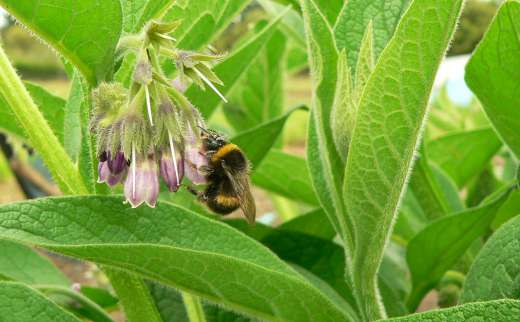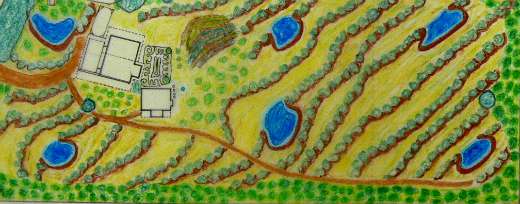- Home
- Permaculture
Permaculture Principles Could Transform Alternative Energy Planning
Permaculture principles of multiple uses for any resource, ecosystem ethics and localised use could radically guide future alternative energy proposals. Also they could accelerate reversal of our planet’s adverse climate trends.
Proposed in the 1970s by Bill Mollison (originally from Tasmania) and David Holmgren (a student who haled from Perth) as a system of sustainable agriculture it has grown to embrace financial, legal and community aspects. Many ideas contributed to the paradigm including traditional practices and experiments of people like Masanobu Fukuoka of “The One Straw Revolution” book fame.
Many more activists have contributed to the field over the years with varying degrees of penetration and influence. By patiently teaching courses these enthusiasts have influenced a rising groundswell of people embracing a radical approach to managing the world about them.
 Wide variety and abundant growth in a rainforest
Wide variety and abundant growth in a rainforestLessons From Nature
By definition it is an organised system of agriculture that seeks to emulate the abundance evident in unmanaged nature where multitudes of species survive alongside and relying on each other to produce a complex, yet very stable, whole.
Living forests, savannahs and other natural habitats do not need added fertilisers to produce luxuriant growth. Over years they build increasing soil for more growth.
Industrial Agricultural Results
In contrast modern agriculture is causing the rapid loss of topsoil worldwide causing those who are aware of this to worry we will run out of viable agricultural land in a generation or two.
Whether it is the USA’s midwest, farmlands in the UK, or tropical rainforests mowed down for farms all are showing signs of depletion. By its very nature, the tropical rainforest areas are the worst affected.
Permaculture Principles Benefits
As a consequence of adopting this redesign mechanism crops are more resilient with water available throughout the year. Varied cropping produces agricultural robustness. If one crop suffers from an unusual seasonal change, other crops offset income losses.
More precipitation tends to occur in areas that have adopted the change.
With multiple levels of vegetation present as explained in what permaculture is a greater absorption of sunlight and yield per acre produces a greater overall harvest and climate stabilisation.
Climate Benefits
As explained further in the section on its effect on climate, these principles are probably the best chance to avert ongoing climate deterioration.
With Google deciding that no matter how fast we adopt alternative or renewable energy options we were not going to reverse adequate climate benefits and therefore abandoning their RE<C initiative, we need some good news.
Permaculture Principles And Energy
Permaculture principles undergird building designs for agriculture. But such understanding can also influence energy generation and harvesting.
In the same way the principles encourage a slowing down of water tracking through your site, similarly freely available energy raining on us daily can be harvested to our benefit.
Instead of relying on major power generators to feed power to us, in the same way we have abdicated our food supply to industrial agriculture, we could harvest and use our own locally. Not only is this vastly more efficient and cheaper, it also involves less transportation of these essentials which contributes even more to adverse climate change gases.
Design Strategies
You can employ a design consultant to plan a concept on permaculture principles for wherever you live. Already emerging are mainly on-line stores that cater for permaculture approaches. You can design your garden around permaculture ideas.
As I found you can adopt some ideas from permaculture in stand-alone structures. But they do not work as they ideally should unless they are undergirded or structured according to over-arching permaculture principles as a whole co-operative system for the whole site.
In the same way taking elements of renewable energy harvesting for each one of our energy needs may work to a certain degree. But if they are employed as an overall design a vastly greater outcome, in this case in available energy, will be possible.
Location Variations
Obviously different areas of the world are markedly varied in the best method to employ permaculture principles for agricultural benefits. Tropical areas require another approach from temperate areas.
Large swathes of fields can be managed differently to small suburban gardens, large urban areas and small backyards. Yet each one of these varied locations can produce effective local food.
In a parallel way, so can alternative or renewable energy generation be achieved.
With its ultimate benefit for feeding the world - in fact this approach can achieve effective world food supply - and its positive benefits on our planet’s climate, permaculture principles well illustrate and lead us to a future approach for all our energy supply.
- Home
- Permaculture


New! Comments
Have your say about what you just read! Leave me a comment in the box below.